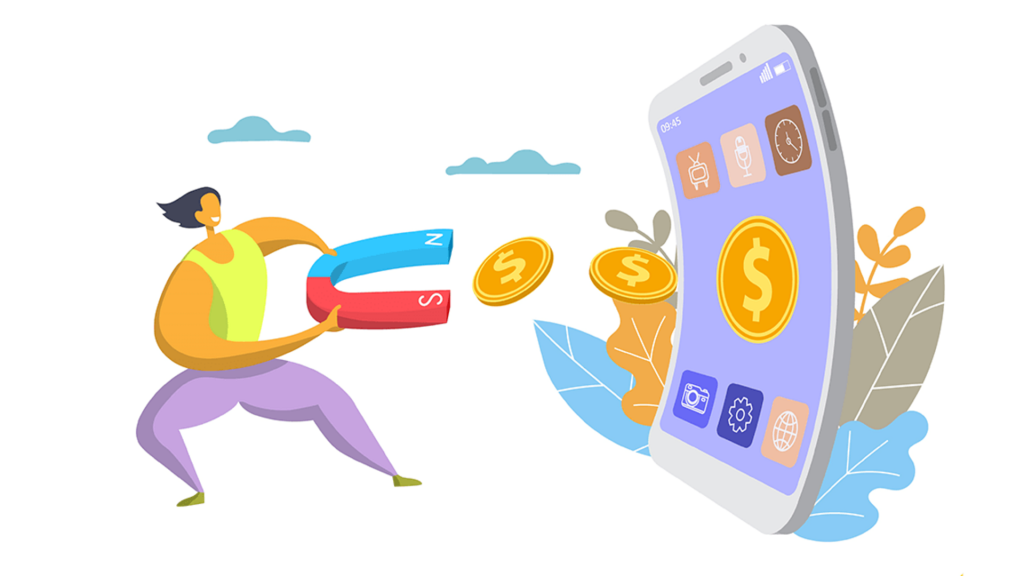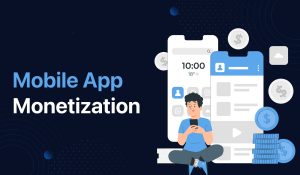
App Monetization. In today’s competitive digital landscape, developing a successful mobile application is just the first step. The real challenge lies in mobile app monetization—turning your hard work into a sustainable revenue stream. Whether you’re a startup or an established developer, understanding different apps monetization strategies is crucial for long-term success.
What is Mobile App Monetization?
Mobile app monetisation refers to the process of generating revenue from a mobile application. With millions of apps available in the market, developers must implement effective monetization application techniques to maximize profitability while maintaining a positive user experience. Successful mobile app monetisation requires a strategic approach, considering user engagement, industry trends, and revenue goals.
Why Mobile App Monetization is Essential
With the growing number of mobile apps on the market, monetization is no longer optional—it’s a necessity. A well-implemented mobile app monetization strategy ensures financial sustainability, allowing developers to continuously improve their applications and provide better services to users. Without a clear revenue model, even the most innovative apps may struggle to survive in the competitive app ecosystem.
Best Strategies for Mobile Application Monetization

1. In-App Advertising
One of the most popular mobile app monetization methods is in-app advertising. This includes banner ads, interstitial ads, video ads, and native ads. Platforms like Google AdMob and Facebook Audience Network help developers integrate ads seamlessly. Developers must balance ad frequency and placement to avoid disrupting the user experience while maximizing ad revenue.
Monetizing your app doesn’t need to be a challenge. With Applanza, you can quickly integrate our user-friendly ad solutions into your Apps and start earning revenue in no time. Whether you’re looking to fund your next project, take that dream vacation, or simply make your app work for you, Applanza makes monetization hassle-free.
Pros of In-App Advertising:
- Provides a steady revenue stream
- Easy to integrate with existing apps
- Works well for free apps with large user bases
Cons:
- Can be intrusive if not managed properly
- Requires high traffic to generate significant earnings
2. Freemium Model
The freemium model allows users to download and use an app for free while offering premium features through in-app purchases. This app monetisation strategy is widely used in gaming and productivity applications. Offering a well-balanced mix of free and premium content ensures user retention while encouraging upgrades.
Pros:
- Attracts a broad user base
- Encourages long-term engagement
Cons:
- Conversion to paying users can be low
- Requires continuous updates and feature enhancements
3. Subscription-Based Monetization

A mobile application monetization strategy gaining popularity is the subscription model. Apps like Netflix and Spotify leverage this method to generate consistent revenue from their user base. Subscriptions work best for apps that provide ongoing value, such as content streaming or educational platforms.
Pros:
- Ensures recurring revenue
- Increases customer loyalty
Cons:
- Requires high-quality content and consistent updates
- Users may cancel subscriptions if value is not maintained
4. Affiliate Marketing
Developers can also monetize their apps through affiliate marketing by promoting third-party products or services and earning a commission for each sale or lead generated through the app. This strategy is particularly effective for content-heavy applications, such as blogs or review platforms.
5. Sponsorships and Partnerships
Collaborating with brands and businesses for exclusive sponsorship deals can be a lucrative mobile app monetisation strategy. This works well for niche applications with a dedicated user base. For example, fitness apps can partner with sports brands for promotional content.
6. Data Monetization
Selling anonymized user data to research firms or advertisers is another revenue-generating technique. However, transparency and user consent are critical in this approach. Developers must ensure compliance with privacy regulations like GDPR and CCPA to maintain user trust.
7. Paid Apps
Though less common due to the popularity of free apps, offering a paid version of an app can still be an effective monetization application strategy, especially for premium tools and professional software. Developers can also use a hybrid model where users pay once to access all features without in-app ads or purchases.
Choosing the Right Monetization Strategy
Selecting the right monetization application method depends on factors like app category, target audience, and user engagement. A combination of strategies often yields the best results, ensuring both profitability and a great user experience. Testing different apps monetization models and analyzing user behavior helps developers refine their approach over time.
Future Trends in Mobile App Monetization

With advancements in technology, new mobile application monetization opportunities are emerging. The rise of blockchain, NFTs, and decentralized finance (DeFi) is opening new revenue streams for app developers. Additionally, AI-driven personalized advertising is expected to enhance ad targeting and improve conversion rates.
As mobile usage continues to grow, developers must stay updated on evolving monetization trends to remain competitive. Adapting to changing user preferences and technological advancements will be key to long-term success in the mobile app monetisation industry.
Final Thoughts
Implementing a well-thought-out mobile application monetization plan can turn your app into a thriving business. By testing different apps monetization models and analyzing user behavior, developers can optimize their revenue potential and build a sustainable mobile application. Whether through in-app advertising, subscriptions, or affiliate marketing, the key is to find the right balance between monetization and user experience for long-term success.





